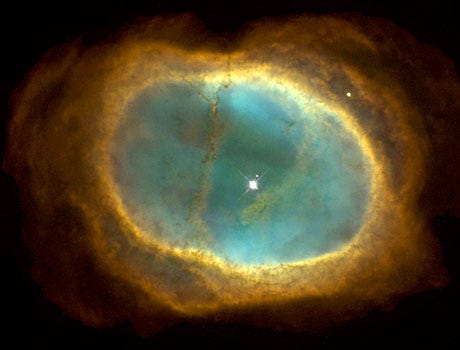NASA Unveils Cosmic Targets for James Webb Telescope's First Images
Written on
Exploring the Cosmic Targets of the Webb Telescope
NASA has announced the cosmic targets for the inaugural images captured by the James Webb Space Telescope (JWST). This selection features an array of fascinating celestial objects, including nebulas, galaxies, and exoplanets.

The Capabilities of the Webb Telescope
The JWST is equipped with advanced infrared technology that enables it to penetrate dense dust clouds, unveiling the processes of star and planet formation. It can also capture light that dates back to approximately 100 million years post-Big Bang, marking the early stages of star and galaxy formation. Today, the JWST team has unveiled a list of targets for its first set of images.
Focus on Notable Nebulas
Among the key targets are the Carina Nebula and the Southern Ring Nebula. A nebula consists of dust and gas in outer space and typically forms from the remnants of supernova explosions. These regions, often referred to as "star nurseries," play a crucial role in the birth of new stars and provide insights into the life cycle of stars.
The Carina Nebula is recognized as the largest and brightest nebula observable in the night sky, hosting stars that are significantly larger than our sun. In contrast, the Southern Ring Nebula is categorized as a planetary nebula, a structure that emerges during the dying phases of stars. Despite its name, it has no direct relation to planets; however, it holds valuable data about the chemical makeup present at the star's formation and the new elements created through nuclear fusion.

Investigating Exoplanets: WASP-96 b
One of the exoplanets on the list is WASP-96 b, a substantial planet located beyond our solar system. This cloudless exoplanet features a sodium-rich atmosphere and has a mass that is about 0.48 times that of Jupiter. It completes an orbit around its parent star in just 3.4 days. The James Webb Telescope aims to analyze the atmospheric composition of this exoplanet in search of potential signs of life.
Galactic Interactions: Stephan’s Quintet and SMACS 0723

Stephan’s Quintet, a group of five galaxies, has sparked debate among astronomers regarding their interactions. Initial observations indicated that these galaxies were engaged in a cosmic dance, although four exhibit redshift, suggesting they are moving away from Earth. The fifth galaxy appears closer, raising questions about its relationship with the others.
Additionally, SMACS 0723 consists of massive foreground galaxy clusters that distort and magnify the light from more distant objects, allowing for a profound exploration of faint and far-off galaxies.
The first images are expected to be unveiled on July 12 at 10:30 EDT and will be accessible via NASA's website.
If you found this article informative, please like and follow for more updates. Until next time!
In the video titled "FINALLY! NASA Shares List of Cosmic Targets for Webb Telescope's First Images," NASA details the exciting array of targets the JWST will focus on, providing insights into their scientific significance.
The live broadcast "WATCH: NASA Reveal First Images from James Webb Telescope - LIVE - YouTube" showcases the highly anticipated initial images from the JWST and discusses their implications for our understanding of the universe.
Social Media: Twitter | Youtube | Instagram
References: